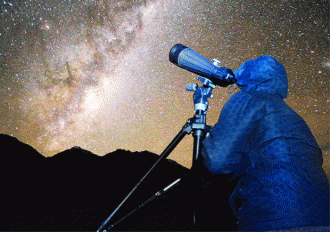Mt. Cook: A night in shining armour
MEENAKSHI RAO goes stargazing in one of the 11 dark sky reserves in the world at Mt Cook National Park & gets completely star-struck
Temperature: Super shivery at 4 degrees. Backdrop: Blue, snowclad mountains on all sides. Job at hand: Tracking down none less than Jupiter, Saturn (with all its rings), the Southern Cross and, well, some butterflies in the sky.
All this while you are trying not to get waylaid by a shiny white patch splashed across the twinkling sky, much like an artist’s wanton brushstroke to give his dark canvas its first break of art. That’s the Milky Way, upclose, upfront and breathtaking.
As a workplace, it couldn’t have gotten groovier than this. At Mt Cook, Sir Edmund Hillary’s playground before he got the Everest bug, there are many things you can do, including merely gazing awestruck at the sky-kissing peaks from your unrestricted room window of the Hermitage Hotel, the only heritage property in the heart of the Aoraki/Mt Cook National Park.
But as night falls and you are strictly told that any kind of light is pariah, you start getting owlish with the well-guarded darkness. At the Aoraki Dark Sky Reserve, light pollution is punishable under an ordinance incorporated into the Mackenzie District Plan in 1981, which keeps light strictly controlled. This gives the unique reserve a gold status which means it is the most spectacular night sky in the southern hemisphere with minimal light and maximum darkness, enabling stargazers to witness a myriad constellations with naked eyes.
You understand this no-light obsession once you take a bus journey to the gazer’s playground. Because here, even the partial moon is an intruder you wish hadn’t come thieving your rare star moment as efficient staff put your eye on to the telescope to peer into the final frontier.
Star gazing may come across as one of those romantic nights spent with your partner, gazing at the starlight sky and making secret wishes to shooting stars, punctuating this languid therapy with a hug and a peck to warm up as silence and isolation emerge as unexpected winners of a deserted landscape.
But at the Mt Cook observatory, it is an organised sport, exciting and a kind of a scrap book interlude for initiators. Planets, constellations and formations are shown through powerful telescopes, clear and near. Though Jupiter shines brighter, a little orangish in the north, Saturn is a little elusive, preferring to not peep out from between the peaks on the western front. But once it does emerge as a sparkle larger than its peers, it is the prima donna with the blue-yellowish rings hugging its countenance.
After an initiation tour of the indoor 3D, 2D planetarium dome at the Sir Edmund Hillary Alpine Centre and Museum at The Hermitage, the real thing gains more meaning for amateurs. But the indoor journey through stars with a looming lifesize dome moving over your heads is no less striking. You are told this is the hitech explanatory prelude for things to come at twilight. It is the first of its kind planetarium where 3D and 2D overlap beautifully to give you an insight into star showers, constellations, planets and the outer universe.
New Zealand is abundant with surreal, ethereal landscapes but once you are with the stars, the sky in the limit. So do not miss the Hillary Centre’s Big Sky Stargazing tour at Mt Cook — and do look out for a non-moon night here before embarking on your journey.
Source: Sunday Pioneer, 14 May, 2017


Comments
Post a Comment